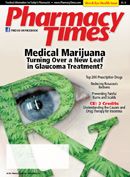Publication
Article
Pharmacy Times
Pharmacy Technology News

Barcodes Cut Error Risk in Hospitals
Researchers at Brigham and Women’s hospital observed a drastic reduction in medication errors after the hospital implemented barcode verification technology, according to a recent report. The study is the first of its kind to be conducted on a large scale within a hospital setting, and identifies barcode electronic medication administration records (eMARs) as an important component of medication safety.
The study’s lead author, Eric G. Poon, MD, MPH, observed medication administration and reviewed order transcription in units that used the new barcode system and those that did not. Dr. Poon and his team reported a 41% relative reduction in errors among those that used the system. Risk of potential adverse drug events, as determined by clinicians who evaluated the severity of the errors, also fell from 3.1% to 1.6%. Transcription errors were completely eliminated.
Dr. Poon concluded that in hospitals, where serious errors often occur in administration and transcription of prescription drugs, “barcode eMAR is an important intervention to improve medication safety.” The findings were reported in the May 6, 2010, issue of the New England Journal of Medicine.

Healthy Tweeting
The power of Twitter can be used for good or ill, new research suggests. Health-related inaccuracies spread rapidly on the social networking platform, according to a study published in the April 2010 issue of the American Journal of Infection Control. By the same token, researchers say health professionals can harness the medium to correct those inaccuracies more quickly and efficiently than ever before.
Daniel Scanfeld, MS, MA, and colleagues from Columbia University randomly selected 1000 tweets posted in a 4-month period that contained some mention of antibiotics. Researchers then reviewed the tweets for evidence of misunderstanding—phrases that indicated users were sharing antibiotics, taking or seeking antibiotics for viral illnesses such as cold or flu, or failing to complete a full course of antibiotic treatment.
Of those tweets, 687 showed signs of misinformation regarding the proper usage of antibiotics. Based on these findings, Scanfield advised patients to take health information found on Twitter “with a grain of salt,” and seek advice from an expert if needed.
Michael Gilbert, a senior fellow at the Annenberg Center for the Digital Future at the University of Southern California, believes health professionals have a responsibility to use Twitter to address factual inaccuracies and track public discussions of high-profile health topics. “Health authorities can and should be monitoring Twitter to see what people are saying about these things, and correct things, particularly if it’s dangerous,” Gilbert said.
FDA’s Infusion Pump Improvement Project
A new initiative from the FDA promises to improve drug-infusion pumps by tightening premarket and postmarket regulations on the widely used medical devices. The agency is requesting early compliance from manufacturers following an increase in the frequency and severity of adverse events linked to the products.
From 2005 to 2009, the FDA recorded 87 recalls and approximately 56,000 adverse events, some of which included serious injuries and deaths caused by deficiencies in manufacturing or design of infusion pumps. The most common issues with the devices were software defects, user errors, broken parts, battery and alarm failures, overinfusion, and underinfusion. The FDA cites one case of “key bounce,” in which a pump registered 1 keystroke as 2—an error that could prompt the device to release medicine at an infusion rate of 10 times the intended dose. In other cases, onscreen instructions for patients were unclear or inconsistent, leading to dosing errors.
Patients who have experienced problems with infusion pumps are encouraged to report such issues to the agency’s MedWatch program at www. fda.gov/Safety/MedWatch/default. htm. For more information on the FDA’s regulation of infusion pumps and other medical devices, visit www. fda.gov/MedicalDevices/default.htm.
Can Mannequins Teach Medicine?
Many pharmacy schools have adopted the use of human patient simulators— also known as robotic patients—to teach clinical skills. Despite widespread approval among pharmacy students, the bots may not help trainees retain knowledge, according to a report published in the American Journal of Pharmaceutical Education.
As part of the study, 120 third-year clinical pharmacy students attended a training workshop designed to prepare them for a role on an advanced cardiovascular life support (ACLS) team. After attending a lecture, students used a “high-fidelity simulation mannequin” to simulate a critical cardiovascular event. Following the session, students were asked to complete an anonymous survey and take a quiz to assess their level of competence in the subject.
Almost all the students agreed that the simulation experience enhanced their understanding of ACLS; however, median score on the knowledgebased test was 25%; 95% of the students answered no more than half of the questions correctly. â–







